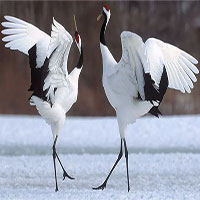It is hard to imagine the difficulties in measuring the world’s highest Mount Everest, especially when people at that time did not have modern technology.
No one is unfamiliar with the summit of Mount Everest, the roof of the world with an altitude of 8,848 meters above sea level. Standing tall with time, the Himalayas go through all the icy seasons and Everest still holds its own altitude record. Even so, the Himalayas still cannot withstand the devastation coming from humans, revolving around the great mountain range and the highest mountain peak in the world are still painful problems caused by the Earth’s most numerous species.
But we are not here to talk about the problems Everest and Himalayas are facing, I want to tell you the truth about “peak XV”.
Measuring Everest has been around for much longer than you think. The Qing Dynasty of China recognized the immense size of the majestic mountain range since 1715, they drew and measured the mountain range, naming it Qomolangma Mountain .
In 1802, the British carried out the Great Trigonometric Survey project to adjust the position and elevation of the name of the highest mountain range on Earth. British researchers were not allowed to set foot on Nepalese territory, so they had to take measurements from the Terai region, which lies parallel to the Himalayas.
Terai is a wet and mosquito-filled plain, three researchers died, two had to abandon the project due to ill health.
The British did not give up, they measured again in 1847. After much effort, they confirmed Kangchenjunga Peak as the roof of the world. However, Andew Waugh of the survey team found another peak about 240km from Kangchenjunga, estimated to be higher than the recognized Kangchenjunga Peak. They call it peak “b”.
It was not until 1849 that explorers had the opportunity to measure peak b. Up to that time, the names of the peaks had been identified with Roman numerals, Kangchenjunga was named Peak IX, peak “b” was also newly named Peak XV , the protagonist of this article.
In 1852, camping at the main surveying headquarters in Dehradun, Radhanath Sikdar was an Indian mathematician who identified Mount XV as the highest peak in the Himalayas, the highest point on Earth. However, the declaration of the highest peak XV was delayed for many years: people constantly wanted to redefine the calculations and final results, so that the height of Peak XV could be confirmed.
Those who doubt the numbers have their reasons. Surveyor Waugh’s team spent 2 years working with numbers, data and calculations over many years, to come up with the March 1856 statement:
The special point here: the measurement parameter gives a round result of 29,000 feet, but the researchers published the result 29,002 feet, to avoid people misinterpreting the over-rounded number as an estimate and not believing the results. actual results.
Waught decided to call Mount XV Mount Everest , in honor of his predecessor, the former leader of the Himalayas survey, Sir George Everest .

George Everest.
Sometimes when doing math, the results are too round, we are also startled to see if we have done wrong anywhere. It is also true that the results are not absolutely true, Mount Everest is not only 8,840 meters high.
The exact altitude of 8,848 meters (29,029 feet) was first announced through the India survey project carried out in 1955. The Chinese measured again in 1975 and gave the result 8,848.13 meters. In both cases, the measurements included a thick layer of snow covering the top of the rocky mountain.
On October 9, 2005, after months of measurements and calculations, the Chinese Academy of Sciences officially announced that Mount Everest was 8,844.43 meters (29,017.16 feet) high, with a deviation of ±0.21 m.
They claim this is the most accurate result to date, and is calculated by the height of the highest cliff, not the snow cover. However, people still accept the old result: Mount Everest is 8,848 meters high.
Everest has not stood still in recent years. Many studies show that geological activity causes Everest to grow 4 mm each year and move about 3 to 6 mm to the northeast. There are studies that suggest Everest is still slightly shrinking compared to the past.
But even if it is a little lower, it is still the roof of the world. Everest is 8,848 meters high, still surpassing the second highest mountain in the world, Mount K2 with an altitude of 8,611 meters.

